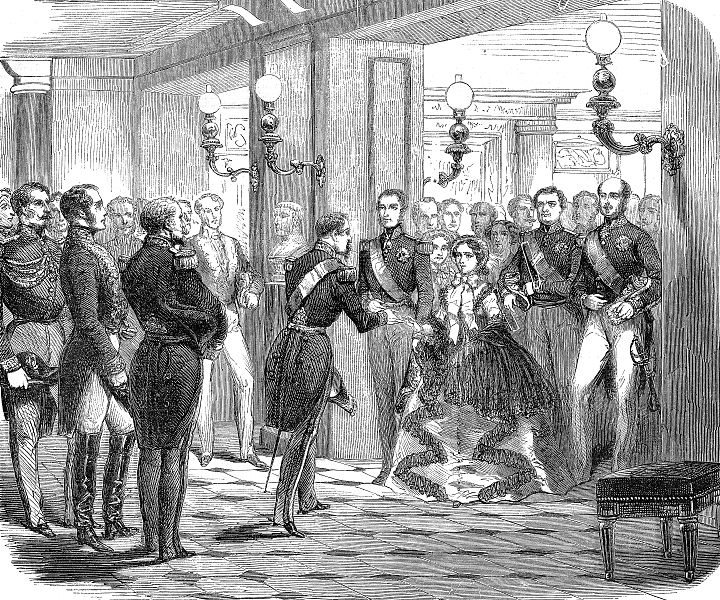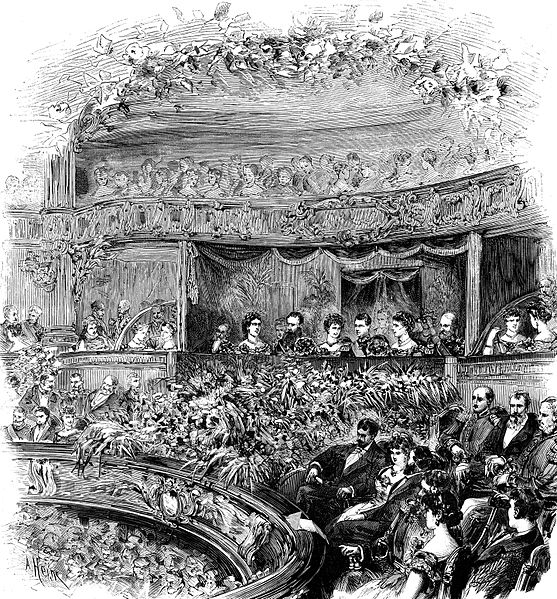 Welcome to the table. Weeks of investigation led the adventurers to the Farsight Estate, where a gathering of nobles provides a perfect opportunity to identify who wants them dead. During this session, the players experienced a new design for social encounters—one that required them to roleplay as the nobles from whom they wanted information. Let’s talk about player-controlled NPCs.
Welcome to the table. Weeks of investigation led the adventurers to the Farsight Estate, where a gathering of nobles provides a perfect opportunity to identify who wants them dead. During this session, the players experienced a new design for social encounters—one that required them to roleplay as the nobles from whom they wanted information. Let’s talk about player-controlled NPCs.
The sounds of soft music, gentle laughter, and the chimes of fine crystal filled the air. Dressed in fine evening attire, our adventurers stepped from the gilded black carriage and entered through fortified iron gates into Countess Farsight’s estate. Whoever had sent assassins to kill our adventurers was going to be at this party.
What is a player-controlled NPC? How can a GM implement these characters into their own game? How can player-controlled NPCs enhance the game?
Entering into the grand hall, the heroes split up, each planning to talk with a potential suspect to gather clues. There were five names on their list: Lord Burwick of the North, Abis Ullicher the Lady of Pearls, Duke Masteffen, Baroness Wessings, and Countess Farsight herself.
Player-controlled NPCs are designed by the GM with motivations, secrets, and goals. Every player is given a character description, and they alternate who plays the NPC and who plays their original character. As I gave each player a notecard with an NPC’s details, I explained that the players would try to discover a secret held by each NPC. These secrets, once gathered, would reveal who the villain was.
 Strass made his way toward Lord Burwick of the North, an imposing individual with a finely maintained mustache who bore a long scar across his neck. Interrupting the lord’s current conversation, Strass began plying the noble with questions.
Strass made his way toward Lord Burwick of the North, an imposing individual with a finely maintained mustache who bore a long scar across his neck. Interrupting the lord’s current conversation, Strass began plying the noble with questions.
As the players started their conversations, some stood and moved to different parts of the room. As a result, the table began to feel like an actual gala. Playing the role as Countess Farsight, I could listen to each groups’ interactions and wait for players to interact with me.
For each note card, I provided the following categories: Personality Traits, Goal, Secret, and Clue. The personality traits help inform the players controlling these NPCs as to how they think, speak, and act. The goal is one or more things that the NPC will request of the player. Since this was an investigation, each NPC was also given a secret, which helped reveal who the villain could be. Finally, the clue should be information that helps guide players into asking about the secret in case the conversation should waver or get off track.
Lord Burwick was a strange man, who demanded that Strass take his son on a hunting trip during the winter. Strass agreed but only to prompt Lord Burwick into revealing details about the assassins. As Strass left the noble to find his friends, Lord Burwick’s words echoed in his head, “He has power in high places and many friends in the court.” Strass left the conversation to find his friends and compare information.
By transforming the play experience into a space where the party could talk more with one another than in front of an audience, I watched as some of my players took more risks with their roleplaying and decision making. The player that played Lord Burwick openly challenged Strass, a barbarian, with an imperious air—something that the player, a rogue, would normally never do.
Players may fail to discover a secret, or a conversation may go poorly and both characters can agree to end it. Providing an option for players to fail or lose an opportunity to learn a secret is important as doing so provides a consequence and sense of realism to the conversations the players are having. After each conversation comes to an end, I recommend asking the players to share the information they’ve acquired and any promises or requests the players may have accepted via the NPCs. In doing this, you can note which requests might serve as possible plot hooks in the future or which promises may have dire consequences.
 Strass reconvened with Tyrash, and the two weighed their options. Lord Burwick and Countess Farsight did not hire the assassins, and the Abis Ullicher had no ties to the local syndicate. That left only Baroness Wessings and Duke Masteffen. As Tyrash scanned the room, he noticed Val chatting with the duke not too far away. Tyrash watched as the duke offered up two glasses of wine, a sly grin playing on his lips as he held one out to Val. A feeling of dread slowly crawled its way up Tyrash’s spine as he watched Val drink heavily from the goblet.
Strass reconvened with Tyrash, and the two weighed their options. Lord Burwick and Countess Farsight did not hire the assassins, and the Abis Ullicher had no ties to the local syndicate. That left only Baroness Wessings and Duke Masteffen. As Tyrash scanned the room, he noticed Val chatting with the duke not too far away. Tyrash watched as the duke offered up two glasses of wine, a sly grin playing on his lips as he held one out to Val. A feeling of dread slowly crawled its way up Tyrash’s spine as he watched Val drink heavily from the goblet.
Player-controlled NPCs offer a fantastic way to break the usual pace of play at the table. By opening the table up, giving the party alternate characters to play within a social setting, the narrative is enhanced and players have an opportunity to engage in a social encounter in a unique way. While these opportunities can be novel and exciting, keep in mind that they may also require coaching and planning to go smoothly.
Let’s sum up:
- Player-controlled NPCs are used most often in social encounters and require players to manage NPCs, gaining access to the NPC’s motivations, secrets, and goals.
- Inviting players to talk more with one another, instead of the GM, creates opportunities for more dynamic roleplaying.
- Creating a player-controlled NPC can be difficult. Keeping in mind clear motivations and goals and drawing upon earlier sessions will help keep your design on track.
Below, I’ve provided a template for the player-controlled NPCs. Feel free to use this at your own games, and let me know how it goes!
Abis Ulliicher the Lady of Pearls (Gnome)
Personality Traits:
- Abis is tall for a gnome and calculating and terse.
- Abis is practical and a bloodthirsty business woman. She likes to use sarcasm to put people on the back foot.
Goal: Abis wants the characters to help her smuggle some contraband out of the city. Alternatively, Abis will ask the characters to frame a member of the city watch.
Secret: Duke Masteffen often speaks about the adventurers, saying how annoyed he is by their antics. Lately, he’s said that he wished for the adventurers to be removed from the city.
Clue: One of the nobles has said a lot about the adventurers and their exploits.
See you at the table!

Always enjoy your articles Jacob. I look forward to trying this out with my group later on. Thanks for the interesting suggestion!